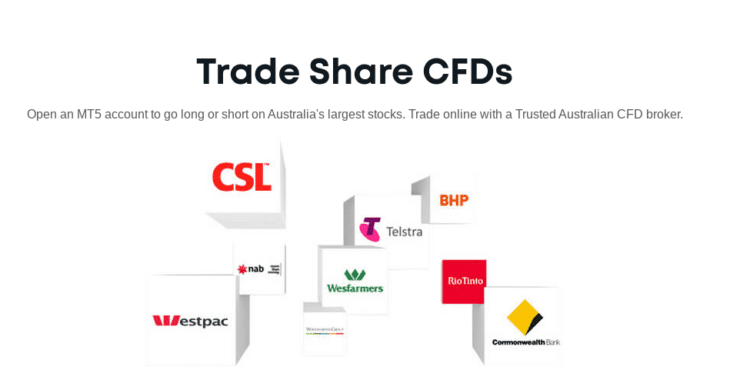The digital age has presented everyday investors the opportunity to buy and sell stocks from the comfort of one’s home. In fact, you’ve now got thousands of stock tips to choose from across dozens of international markets.
Our Forex Signals
1 - month
Subscription
 Up to 15 signals daily
Up to 15 signals daily 76% success rate
76% success rate Entry, take profit & stop loss
Entry, take profit & stop loss Amount to risk per trade
Amount to risk per trade Risk reward ratio
Risk reward ratiomonth
3 - month
Subscription
 Up to 15 signals daily
Up to 15 signals daily 76% success rate
76% success rate Entry, take profit & stop loss
Entry, take profit & stop loss Amount to risk per trade
Amount to risk per trade Risk reward ratio
Risk reward ratiomonth
 Most popular
Most popular
6 - month
Subscription
 Up to 15 signals daily
Up to 15 signals daily 76% success rate
76% success rate Entry, take profit & stop loss
Entry, take profit & stop loss Amount to risk per trade
Amount to risk per trade Risk reward ratio
Risk reward ratiomonth
Lifetime
Subscription
 Up to 15 signals daily
Up to 15 signals daily 76% success rate
76% success rate Entry, take profit & stop loss
Entry, take profit & stop loss Amount to risk per trade
Amount to risk per trade Risk reward ratio
Risk reward ratioSeparate Swing Trading Group
 Up to 3 signals weekly
Up to 3 signals weekly 76% success rate
76% success rate Entry, take profit & stop loss
Entry, take profit & stop loss Amount to risk per trade
Amount to risk per trade Risk reward ratio
Risk reward ratiomonth
1 - month
Subscription
 Up to 15 signals daily
Up to 15 signals daily 76% success rate
76% success rate Entry, take profit & stop loss
Entry, take profit & stop loss Amount to risk per trade
Amount to risk per trade Risk reward ratio
Risk reward ratiotime
The best thing about it is that it takes just minutes to buy stocks online – with some brokers even offering commission-free trades. However, with so much choice on the table, knowing which stocks to add to your portfolio can be challenging – especially if you’re a beginner.
With this in mind, this article will discuss the best stock tips to consider in 2023. In reading through our stock tips from start to finish, you’ll be armed with the required tools to build your own portfolio of shares – rather than relying on third-party advice.
Eightcap - Regulated Platform With Tight Spreads

- Minimum deposit of just 250 USD to get lifetime access to all the VIP channels
- Use our Secure and Encrypted Infrastructure
- Spreads from 0.0 pips on Raw Accounts
- Trade on the Award-Winning MT4 & MT5 Platforms
- Multi-jurisdictional Regulation
- No Commission Trading on Standard Accounts

Stock Tip 1: Understand the Importance of Viewing Stocks as a Long-Term Investment
Before we get to the nitty-gritty, it’s absolutely crucial to discuss the importance of ‘patience’ in the stock markets. In fact, the general rule of thumb is that you should consider holding onto your stock investment for at least five years.
The reason for this is that stocks and shares operate in a volatile marketplace. That is to say, the wider markets go through several trends throughout the year – both in an upwards and downwards direction.

- In February 2020, Tesla stocks were priced at $180.
- Just one month later, the same stocks hit lows of $70.
Had you panicked and cashed out towards the $70 point, you’d be looking at losses of over 60%
- Fast forward to January 2021, and Tesla stocks have since breached $880 per share.
- As such, had you sat tight in March 2020 and not sold your shares during the temporary market correction, your investment would now be worth 388% more.
Ultimately, while not all stocks will recover their prior highs, if you believe in the company and feel that the fundamentals speak for themselves, avoid the temptation to cash out during a downward market.
Stock Tip 2: Diversification is Crucial
Next up in our list of stock tips to consider in 2023 is that of diversification. This term refers to the process of investing in multiple stocks from multiple industries and economies. In other words, by following a diversification strategy, you’re avoiding putting all of your eggs into one basket.
A stock portfolio that is well-diversified might look like this:
- 20% of stocks in high-grade, blue-chip companies (e.g. Johnson and Johnson).
- 20% of stocks in growth companies (e.g. Tesla and Square).
- 50% of stocks in dividend-paying companies.
- 10% of stocks in small-cap firms (e.g. market valuation of less than $1 billion).
In each of the categories above, you will have stocks from heaps of different sectors.
This might include:
- Retail.
- Banking and Financial Services.
- Consumer Goods.
- Technology.
- Construction.
- Hospitality.
Now, by building a diversified portfolio, you are taking a sensible, risk-averse approach to investment. This is because you are not overly exposed to a single company or sector.
For example, when the coronavirus pandemic first came to fruition in early 2020, stocks operating in the oil and gas, retail, and travel sectors were hit extremely hard. In fact, many are still worth less than pre-pandemic levels.
On the other hand, technology stocks such as Amazon, Apple, Google, Facebook, and Square have all thrived over the past 12 months. The key point here is that while you might have taken a hit on travel-related stocks, these losses would have been countered in a well-diversified portfolio that also contains tech stocks.
Stock Tip 3: Learn how to Research Stocks
The biggest mistake that you can make as a stock investor is to follow the “expert advice” of a third-party tipster. That is to say, you should never invest money into a stock because of somebody else’s opinion. Instead, it’s crucial that you learn the ins and outs of how to research stocks yourself.
In doing so, you can be sure that the stock investment is suitable for your personal investing goals. Now, as a long-term investor, you don’t need to pay too much attention to technical analysis. On the contrary, your main focus should be on the fundamentals.
This covers two key areas in particular – the financials and relevant news developments.
Earnings Reports
When we talk about the “financials”, we are talking about the specific performance of the company. In its most basic form, this includes the amount of revenue and profit is generating. All public companies must release this information via an earnings report every three months. Everyone has access to this information at the same time – ensuring a fair and level playing field.

For example, if the stock projected quarterly revenues of $2 billion but it actually generated $2.6 billion – this is great news. In turn, you should expect the markets to react positively – meaning an increase in stock price. However, if financial performance is worse than the markets had expected, the opposite will happen.
News
News stories can and will influence the direction of market sentiment on a stock. For example, let’s suppose that you are holding shares in two leading oil companies – BP and ExxonMobil.
As more and more news developments of global travel restrictions came to light in the midst of the pandemic, how do you think this would have impacted the value of your oil stocks? Without a doubt, the stocks took a massive dive in early 2020.
Similarly, let’s suppose that you have Facebook stocks in your portfolio. When news broke of a major data and privacy breach, how do you think this impacted the value of Facebook shares? Once again, the shares took a major hit.
With that being said, it’s not just negative news stories that you need to look out for. Instead, news developments can also be positive for the value of a stock.
For example, when the Canadian government announced that it was planning to relax domestic regulations on the sale of recreational cannabis, this was major news for stocks active in the legal marijuana arena.
Ultimately, one of the best stock tips that we can give you is to stay ahead of the game by keeping abreast of key news developments.
Stock Tip 4: Create a Dividend Reinvestment Plan
As you likely know, many stocks generate dividends. This means that you will receive a payment from the company every three months. The size of the payment is generally dictated by the performance of the respective firm.
For example, if the stock performed well over the prior quarter in terms of revenues and operating profits, the chance of an increased dividend being paid is higher.
Nevertheless, irrespective of how much you receive, seasoned investors will almost always reinvest their dividends. They will often do this by placing the dividends back into stocks they already own.
Let’s look at a couple of examples of why creating a dividend reinvestment plan is one of the best stock tips we can give you.
- Let’s suppose that you have $5,000 worth of dividend stocks in your portfolio.
- At the end of year 1, you received a total of 7% in dividends.
- This amounts to $350.
- If you withdraw that $350 out and assuming the price of the shares has not changed, you will still be left with $5,000 worth of dividend stocks.
- As such, if at the end of year 2 you again get a dividend yield of 7%, that’s another $350.
Now let’s see what the situation is had you reinvested your dividends by purchasing more stocks.
- At the end of year one, you’ve reinvested your $350 dividends into additional stocks.
- This means that your total stock holding has gone from $5,000 to $5,350.
- At the end of year 2, your 7% dividend yield is now based on a stock investment of $5,350.
- As such, instead of receiving dividends of $350 like in the previous example, you’ll actually receive $374.
Now, although the difference here might seem minute, the impact of a dividend reinvestment plan can really begin to sky-rocket over the course of time. This is because you will benefit from “compound interest”.
In simple terms, this means that with each stock you buy with your dividend proceeds, that’s another stock that will itself earn dividends. In other words, you’re earning “interest on the interest” and thus – the value of your portfolio can grow at a faster rate.
Stock Tip 5: Dollar-Cost Average Your Stock Investments
A lot of newbie investors are unable to deal with short-term volatility. More specifically – and as we noted earlier in our stock tips guide, inexperienced investors are often tempted to sell their shares when the markets are on a downward spiral. In most cases, this can be a costly mistake.
The good news is that there is a simple stock tip that will allow you to completely ignore the current state of play in the markets – dollar-cost averaging.

In doing so, you will get a different stock price on each investment which in turn – will average out your overall cost price. This means that when the markets are on a downward trajectory, you will be able to buy the stocks at a lower price. And of course, when the stock markets are in your favor, you’ll pay a higher price.
For example:
- You buy Apple stocks in January 2021 at $130.
- You buy Apple stocks in February 2021 at $140.
- You buy Apple stocks in March 2021 at $100.
- You buy Apple stocks in April 2021 at $120.
As per the example above – and assuming you invested the same amount each time, your average cost price on Apple stocks is $122.50. The key point here is that dollar-cost averaging prevents sleepless nights concerning downward market trends.
Stock Tip 6: Look for Undervalued Stocks
One of the most important stock tips that we can give you is to learn the process of finding “undervalued” stocks. In other words, search for stocks that have a current share price that is less than its intrinsic value.
Of course, being able to make this judgment is no easy feat if you are a newbie. With that said, having a basic understanding of key stockmarket ratios can help you along the way.
This includes the following:
Price to Earnings Ratio (P/E)
The price to earnings ratio (P/E) is often the go-to calculation to find an undervalued stock.
You utilize it, you need to do the following:
- Get the current price of the stock in question.
- Get the earnings-per-share.
- Divide the current stock price into the earnings-per-share.
You will then be left with a ratio. For example, if the current stock price is $50 and the earnings-per-share is $10, this means that the P/E ratio is 5.
The analysis process doesn’t stop here – as you need to know what the ratio actually represents. As such, you then need to find out what the average P/E ratio is for the respective industry that the stock operates in.
For instance, let’s suppose that the above example relates to US banking stocks. If the average P/E ratio in this particular industry is 10 and your stock has a ratio of 5, then this could indicate that it is undervalued.
The good news is that you don’t even need to perform the calculation yourself these days. This is because you can easily find out what the P/E ratio is by performing a quick Google search.
You’ll be shown heaps of reputable financial news websites that not only display the R/E ratio on your chosen stock but lots of other key accounting metrics.
Price to Book Ratio (P/B)
Perhaps an even more useful calculation that can help you find undervalued stocks is that of the price to book ratio. This ratio will take the current share price of the company and divide it into its “book value.
For those unaware:
- The book value of a stock looks at the firm’s total assets.
- Less total liabilities.
- Divide the result by the number of shares in circulation.
The general rule of thumb is that if you are left with a ratio of less than 1, the stock in question could be undervalued.
Stock Tip 7: Consider a Passive Form of Stock Investing
When it comes down to it – the overarching objective of investing in stocks to make money. As such, if you’re a complete newbie, it might not be worth you taking on the burden of picking and choosing stocks yourself. Instead, why not consider a passive form of income?
This means that you won’t need to learn the ins and outs of how to research companies, nor will you need to keep abreast of current market news. Instead, you can sit back and allow your money to work for you.
If you like the sound of this particular stock tip, the best options on the table are as follows:
ETF Index Funds
Index funds are tasked with tracking the wider stock markets. For example, the S&P 500 is an index that tracks 500-large companies listed in the US. This includes the likes of Amazon, Apple, Facebook, Microsoft, and PayPal. You then have the NASDAQ 100 – which tracks the largest 100 companies on the stock exchange of the same name.
There are many, many other examples. The key point is that rather than investing in a small selection of stocks, index funds give you exposure to dozens, if not hundreds of companies. Best of all, when investing in a stock market index via an ETF (Exchange-traded fund), you can complete the process through a single trade
For those unaware, the ETF provider (for example, iShares or Vanguard) will personally buy all of the stocks that are listed on the index. For example, if you’re looking to invest in the Dow Jones 30, the ETF will buy shares in all 30 companies.
This will be weighted to reflect the actual index. For example, if 4% of the Dow Jones 30 is allocated to Salesforce, 4% of the ETF basket will also hold shares in Salesforce. If the respective index adds or removes a stock, as will the ETF provider.
Copy Trading
An additional option that you have at your disposal is “Copy Trading”. This is a feature offered by regulated broker eToro. As the name suggests, you will be copying another eToro user like-for-like.
For example, you might come across a stock trader with a superb track record at the platform. In turn, you might decide to invest $2,000 into the individual via the Copy Trading tool.
In doing so, you will instant copy their trader’s portfolio at an amount proportionate to what you invested.
Let’s break down the fundamentals of this stock tip in more detail::
- You’ve invested $2,000 into a stock trader at eToro.
- The trader has 50% of their portfolio in IBM shares. 30% is in Twitter and 20% in Walmart.
- In turn, your portfolio will allocate $1,000 into IBM (50%), $600 in Twitter (30%), and $400 in Walmart (20%).
Thereon, you can also elect to copy all ongoing positions like-for-like. For example, if the trader sells their position in Walmart and then buys shares in Apple, your portfolio will mirror this.
Ultimately, the Copy Trading option is an active way to trade the stock markets. This is because ETFs are only tasked with “tracking” a specific market, as opposed to outperforming it. For example, if the ETF is tracking the Dow Jones and the index goes down by 10%, the ETF will drop by the same figure.
Stock Tip 8: Don’t be Afraid to Short-Sell a Falling Stock
Although this particular addition to our stock tips guide won’t be for everyone – it’s worth considering nonetheless. Put simply, short-selling refers to the process of speculating that a stock will go down in value. This is the complete polar opposite to a traditional long-term investment plan, as you are obviously hoping for the stocks to increase.

But, if you’re confident that a stock is likely to decrease – at least in the short run, why not profit from this?
- For example, let’s say that you are holding stocks in a pharmaceutical company that is working on a promising coronavirus vaccine.
- However, news breaks that the U.S. Food and Drug Administration has suspended the firm’s clinical trials due to safety concerns.
- In turn, it’s all-but-certain that the stock will begin a downward slump once the markets reopen in the morning.
As per the above, a shrewd trade would no doubt look to short-sell the pharmaceutical stock in question. In order to do this, all you need to do is use an online CFD broker. This is because CFDs allow you to short-sell companies via a “sell order”.
Stock Tip 9: Understand How Stock Investment Fees Work
Before you embark on your long-term investment journey, one of the best stock tips that we can give you is to ensure you understand how online brokerage fees work. After all, your chosen broker offers a service – so it needs to charge a fee of some sort.
The two most important fees that you need to consider are commissions and spreads.
Stock Commissions
The vast majority of online stock brokers charge a commission. This either comes via a flat fee or a percentage. If it’s the former, you will pay the same fee on each trade – irrespective of how much you invest.
For example, you might pay $10 to buy your chosen stock and another $10 when you cash out. This particular commission structure is best suited for those investing larger amounts.
Alternatively, your chosen broker might have a variable commission in place that is multiplied by your stake. For example, it might charge 0.5% – meaning a $2,000 stock investment would cost you $10. This benefits those investing smaller amounts, as you are not hit with a fixed fee.
Spreads
Spreads are also important to consider when figuring out how much you are paying to invest. This is the difference between the bid and ask price of a stock.
Put simply:
- The bid price is the highest price that a buyer will pay for a stock.
- The ask price is the lowest price that a seller will accept for a stock.
This gap in pricing will have a direct impact on your potential profits. For example, if your broker is quoting a spread of 2%, in theory, this means that you need to make gains of 2% on your investment just to break even.
What you might find is that your chosen broker doesn’t charge any commissions, but that they make up for this with a wide spread. As such, it’s also good to assess what this is, before parting with your money.
Stock Tip 10: Find a Great Broker
Make no mistake about it – in order to access the global stock markets, you need to go through an online broker. Moving in 2023, there are now hundreds of brokers active in this space. Some of more popular than others, largely because of low fees and spreads.
However, you also need to look at other metrics, such as:
- What stocks the broker gives you access to.
- The minimum deposit and account balance.
- Supported payment methods and associated fees.
- Which financial bodies the broker is licensed by if any.
- Whether the broker offers research and analysis tools.
- How user-friendly the broker is.
All in all, finding a suitable broker for your needs can be a time-consuming process.
To help you along the way, below you will find a small selection of stockbrokers that are worth considering.
VantageFX – Ultra-Low Spreads
VantageFX VFSC under Section 4 of the Financial Dealers Licensing Act that offers heaps of financial instruments. All in the form of CFDs - this covers shares, indices, and commodities.
Open and trade on a Vantage RAW ECN account to get some of the lowest spreads in the business. Trade on institutional-grade liquidity that is obtained directly from some of the top institutions in the world without any markup being added at our end. No longer the exclusive province of hedge funds, everyone now has access to this liquidity and tight spreads for as little as $0.
Some of the lowest spreads in the market may be found if you decide to open and trade on a Vantage RAW ECN account. Trade using institutional-grade liquidity that is sourced directly from some of the top institutions in the world with zero markup added. This level of liquidity and availability of thin spreads down to zero are no longer the exclusive purview of hedge funds.

- The Lowest Trading Costs
- Minimum deposit $50
- Leverage up to 500:1
To Summarize
This guide has outlined 10 stock tips that will ensure that you start your share dealing journey off on the right foot.
We have covered everything from learning how to read company earnings reports and staying ahead of relevant financial news, to deploying a dividend reinvestment strategy and Copy Trading.
Crucially, we have also discussed the importance of choosing a suitable stock broker. After all, brokers form the bridge between you and your chosen stock market investments.
Eightcap - Regulated Platform With Tight Spreads

- Minimum deposit of just 250 USD to get lifetime access to all the VIP channels
- Use our Secure and Encrypted Infrastructure
- Spreads from 0.0 pips on Raw Accounts
- Trade on the Award-Winning MT4 & MT5 Platforms
- Multi-jurisdictional Regulation
- No Commission Trading on Standard Accounts

